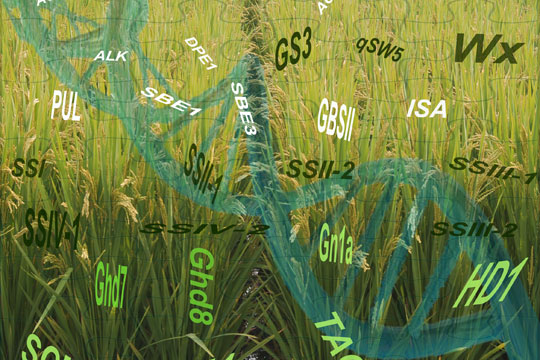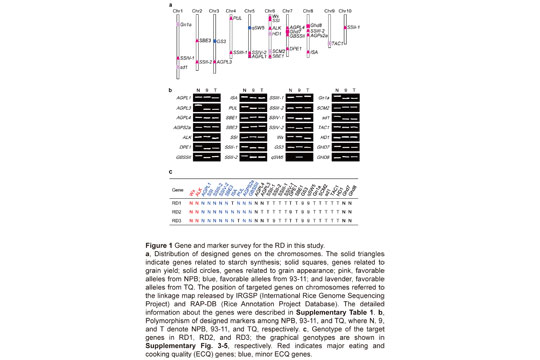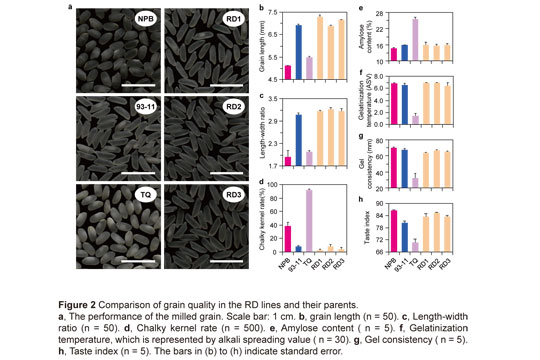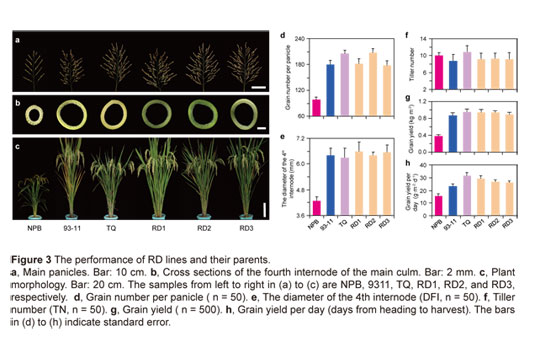










Rational design of high-yield and superior-quality rice
April 7th, 2017
Rice (Oryza sativa L.) is a staple food for more than half of the world’s population. To meet the ever-increasing demand for food, because of population growth and improved living standards, world rice production needs to double by 2030. The development of new elite rice varieties with high yield and superior quality is challenging for traditional breeding approaches, and new strategies need to be developed.
Recently, researchers from China National Rice Research Institute (CNRRI), Institute of Genetics and Developmental Biology, Chinese Academy of Sciences, Institute of Genetics and Developmental Biology, Chinese Academy of Sciences successfully developed new elite varieties by pyramiding major genes that significantly contribute to grain quality and yield from three parents (Nipponbare, 93-11 and Teqing) over five years. These new varieties exhibited higher yield potential and better grain quality than their parental varieties and the China’s leading super-hybrid rice, Liang-you-pai-jiu (LYP9 or Pei-ai 64S/93-11). This result demonstrated that rational design is a powerful strategy for meeting the challenges of future crop breeding, particularly in pyramiding multiple complex traits.
This work was supported by the National Natural Science Foundation of China (grant nos. 91535205, 91435105 and 31521064), the National Key Basic Research Program (grant no. 2013CBA014) and the ‘Strategic Priority Research Program’ of the Chinese Academy of Sciences (grant no. XDA08000000). The research finding has been published in Nature Plants online on March 20 17, 2016=7 (DOI: 10.1038/nplants.2017.31). More details are available on the links bellow: http://www.nature.com/articles/nplants201731
· Study Reveals How the Clock Component OsLUX Regulates Rice Heading
· Scientists Further Unravelled the Underlying Mechanism of Heading Date Control in Rice
· Improving the efficiency of prime editing in rice
· A New Infection Mechanism of Ustilaginoidea virens is Revealed
· Scientists Further Reveal the Infection Mechanism of Ustilaginoidea virens
CNRRI Today
Copyright © 2014- China National Rice Research Institute